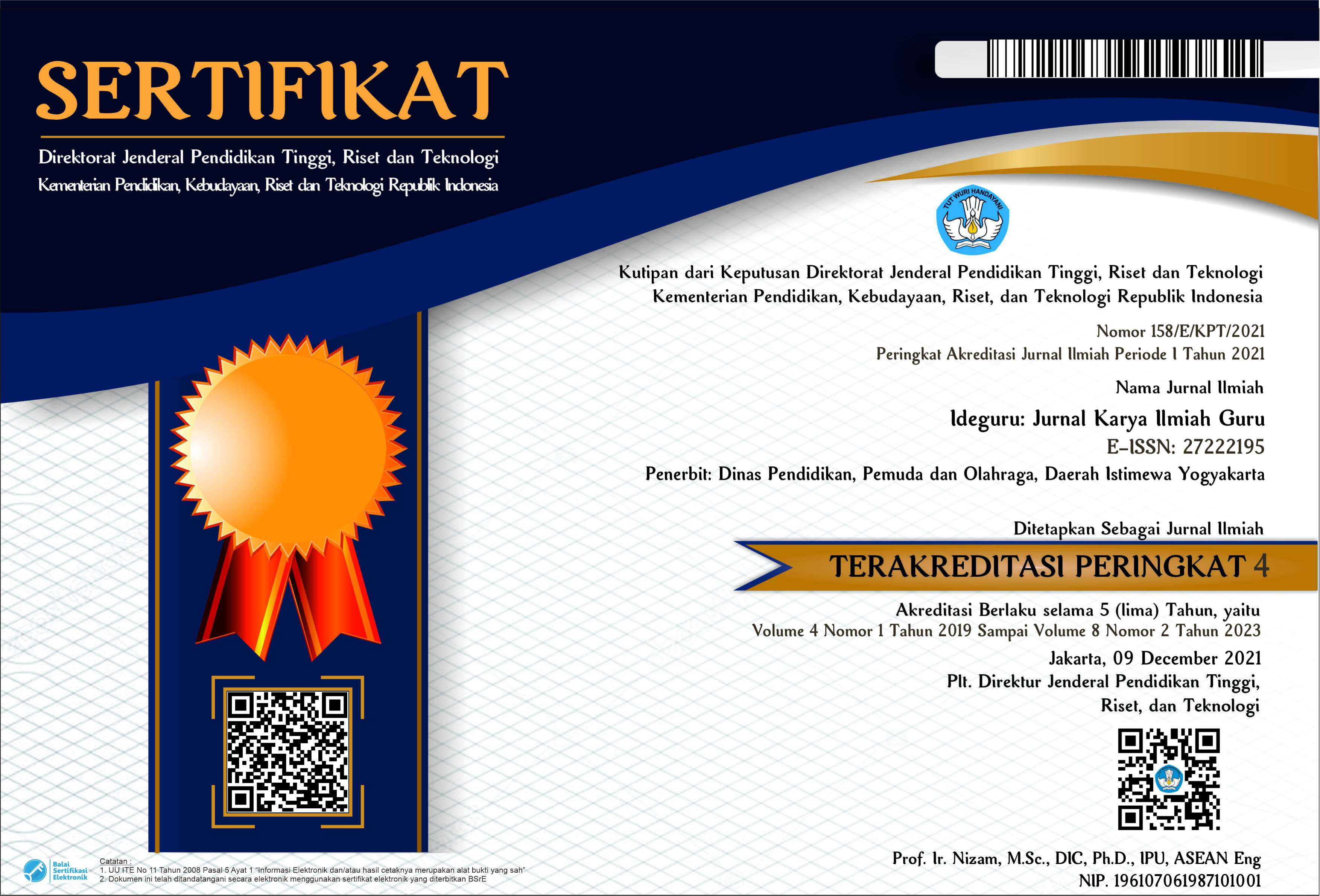Pengaruh Metode Flipped Learning terhadap Motivasi Belajar Peserta Didik pada Mata Pelajaran PAI
Abstract
This research is motivated by the challenges of educators in the 21st century who demand to transform the teaching and learning process using technological tools as part of the competencies and characteristics of 21st-century students. One way of transforming the teaching and learning process can be done by changing learning methods that utilize technological tools as part of the learning process and can increase students' learning motivation in their learning activities. Therefore, researchers chose the flipped learning method in order to see its influence on students' learning motivation in PAI subjects. This research aims to describe the data on the differences between students' learning motivation before and after using the flipped learning method, especially in PAI subjects in Class VI SDN 5 Rancah, Rancah District, Ciamis Regency, and to determine the effect of the flipped learning method on students' learning motivation in PAI subjects. in class VI at SDN 5 Rancah, Rancah Ciamis District. Apart from that, researchers also want to know. This research uses a quantitative experimental method using a questionnaire instrument or learning motivation questionnaire and pre-test and post-test instruments, both of which are aimed at class VI students at SDN 5 Rancah, Rancah District, Ciamis Regency. Apart from that, direct observation was also carried out at the research location. The results of this research show that before using the flipped learning method in the teaching and learning process in PAI subjects, the student's learning motivation scores showed an average pretest score of 64.8125. Then, after using the flipped learning method in the teaching and learning process in PAI subjects, the student's learning motivation scores showed an average post-test score of 73.3125. Based on the results of these two conditions, the researcher concluded that there was a significant influence, as proven by the hypothesis test data, that the flipped learning method variable (X) contributed or could explain the learning motivation variable (Y) by 32.8% while the remaining 67.2 % explained by other variables outside the model.
PDF Downloads
Copyright (c) 2024 Iman Rohiman, Ade Miftah, Husni Thoyyar

This work is licensed under a Creative Commons Attribution 4.0 International License.

 DOI:
DOI:














